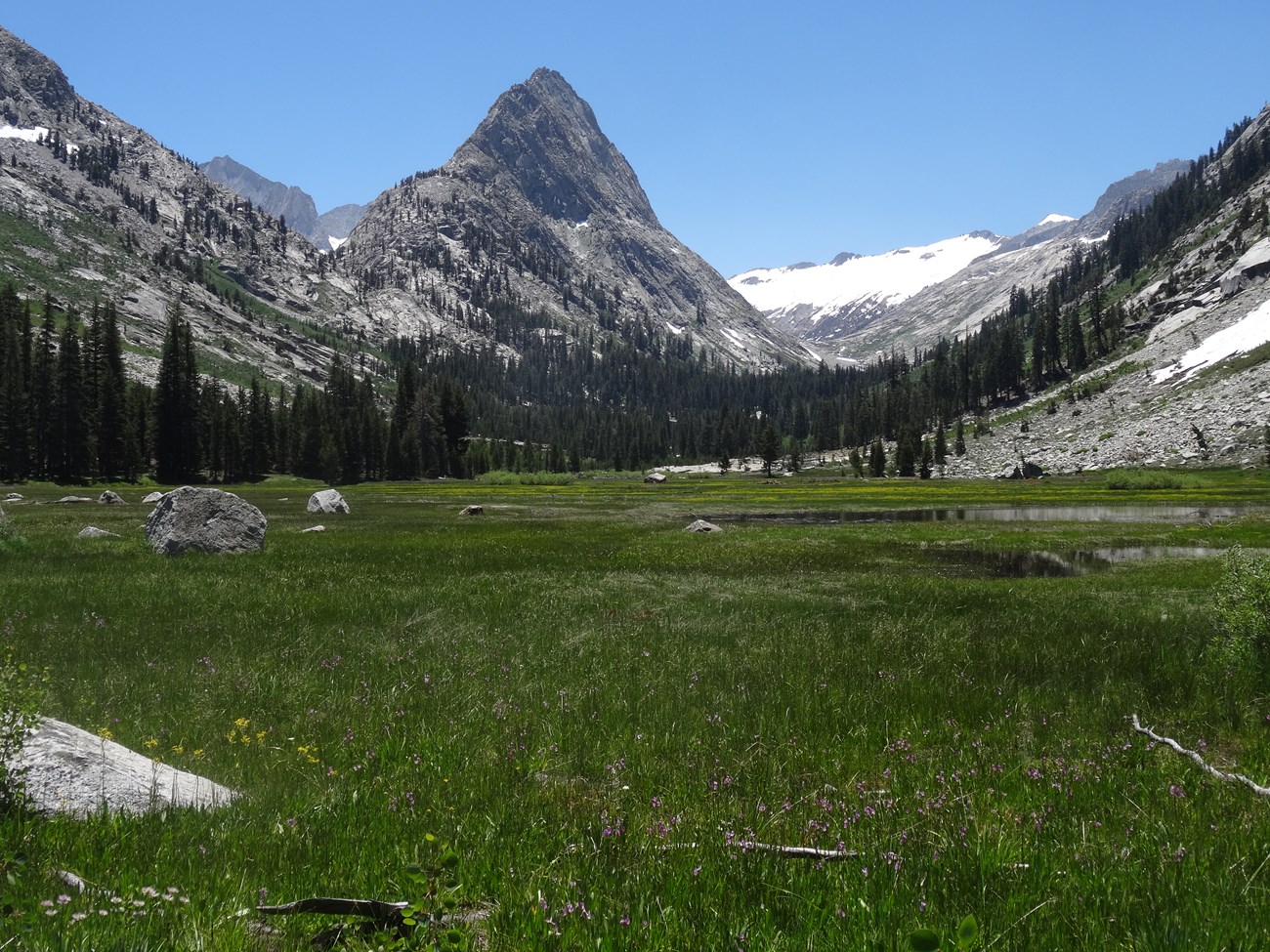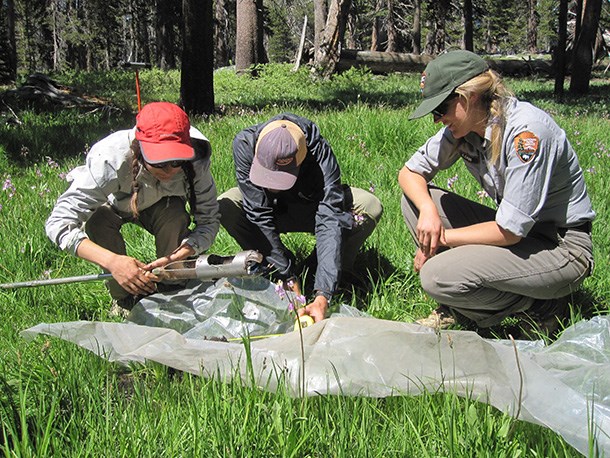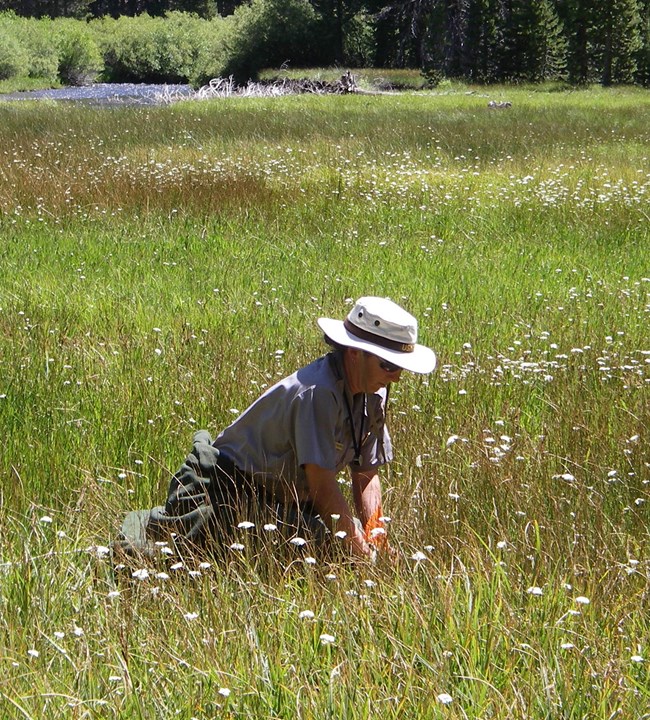
Photo by: Mandy Holmgren, The Institute for Bird Populations
Overview
A wetland is an area of land that is saturated with water either permanently or seasonally. Wetlands are considered the most biologically diverse of all ecosystems, and in the Sierra Nevada, they support a disproportionate amount of biodiversity relative to the small portion (<10%) of the landscape they occupy. Plant life in Sierra Nevada wetlands includes sedges, grasses, mosses, shrubs, scattered trees, and numerous other moisture-loving flowering plants. Animals include frogs, toads, salamanders, birds, mammals, and invertebrates.
Wetlands provide critical habitat for a variety of wildlife, play an important role in the life cycle of many invertebrate and amphibian species, and provide a wide variety of ecosystem services such as nutrient retention, flood control, and sediment storage. Wetlands are also important aesthetic elements of Sierra Nevada landscapes and provide forage for wildlife and recreational and administrative pack stock.
Wetlands are vulnerable to a variety of stressors, from local site impacts to landscape-scale stressors. The major stressors include:
- Non-native, invasive species
- Air pollution from regional urban and agricultural sources
- Climate change - changes in the timing and amount of snowmelt may affect water availability
- Grazing - historic livestock grazing had lasting impacts on some wetlands, and current, more limited pack stock grazing can cause physical changes such as soil compaction or erosion
Wetlands provide many important ecological functions and recreational values in Sierra Nevada Network parks. This monitoring project will help managers document change in wetland condition, evaluate potential threats, identify areas of management concern, and provide a foundation for research projects.

NPS photo
Approach and Objectives
We visit a set of randomly selected sites in Sequoia, Kings Canyon, and Yosemite every 1–4 years, and one site in Devils Postpile every year. Sites sampled are limited to ungrazed and lightly grazed wetlands. Two types of wetlands are monitored:
Fens – occur in basins, on slopes, or in association with distinct springs. They are perpetually saturated or flooded from groundwater sources. A major identifying trait of fens is they accumulate peat (decayed vegetation), enabling them to store carbon.
Wet Meadows – characterized by shallow water tables that persist through much of the growing season and fine-textured soils. Wet meadows rely on water from precipitation, groundwater, or surface flow. The high water tables often favor plant species that grow only in wetlands.

NPS photo
Monitoring Objectives
- Determine temporal changes in hydrology.
- Estimate temporal changes in species composition and abundance of wetland vascular and non-vascular plants.
- Evaluate temporal changes in the composition and relative abundance of wetland macroinvertebrate (arthropods and molluscs within size constraints) populations.
- Determine temporal changes in non-native plant species cover and dominance in structural plant layers.
- Quantify and compare the status of fen and wet meadow wetlands.
- Compare rates of change in wetland community characteristics between fen and wet meadow sites.
Quick Reads
Publications and Other Information
Source: NPS DataStore Saved Search 994. To search for additional information, visit the NPS DataStore.
Source: NPS DataStore Saved Search 1019. To search for additional information, visit the NPS DataStore.
Source: NPS DataStore Saved Search 1024. To search for additional information, visit the NPS DataStore.
Last updated: April 25, 2025
